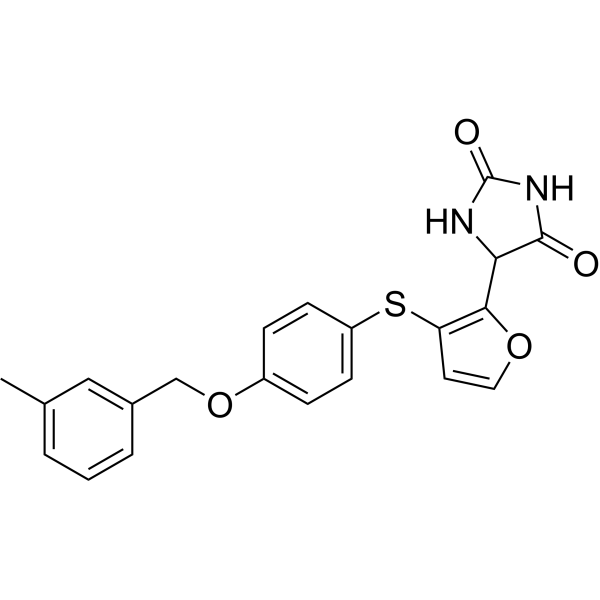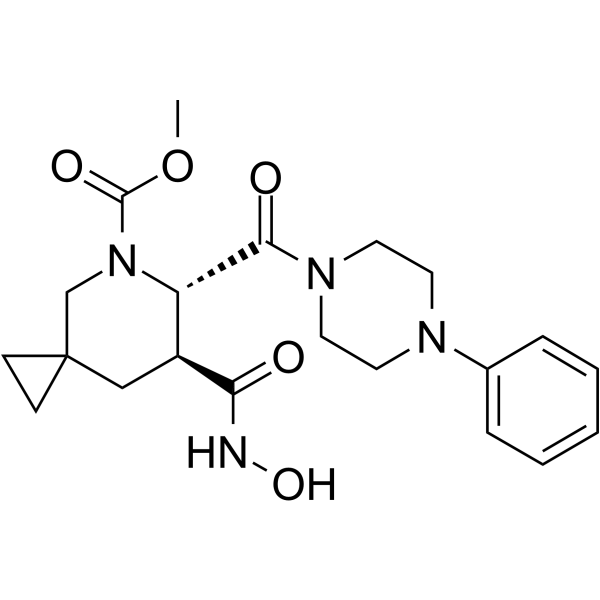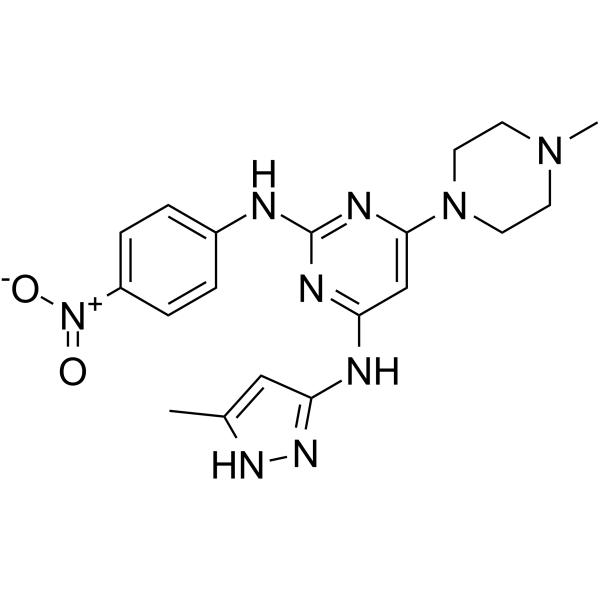Enzymes(酶)
Enzymes are very efficient and specific catalyst proteins which react with 1 or few types of substrates in biochemical reactions and are responsible for bringing about almost all of the chemical reactions in living organisms. Enzymes speed up reactions by providing an alternative reaction pathway of lower activation energy. Without enzymes, reactions take place at a rate far too slow for the pace of metabolism which means that they speed up the chemical reactions in living things.
There are 2 types of enzymes, ones that help join specific molecules together to form new molecules & others that help break specific molecules apart into separate molecules. Enzymes play many important roles ouside the cell as well. One of the best examples of this is the digestive system. For instance, it is enzymes in your digestive system that break food down in your digestive system break food down into small molecules that can be absorbed by the body. Some enzymes in your digestive system break down starch, some proteins and others break down fats. The enzymes used to digest our food are extra-cellular since they are located outside our cells & enzymes inside our cells are intra-cellular enzymes. Enzymes are used in ALL chemical reactions in living things; this includes respiration, photosynthesis, movement growth, getting rid of toxic chemicals in the liver and so on. Enzymes are proteins that must have the correct structure to be active. They are very easily affected by heat, pH and heavy metal ions.
Ribonucleoprotein enzyme catalytic activity is located in the protein part but for some the catalytic activity is in the RNA part. A catalyst is any substance which makes a chemical reaction go faster, without itself being changed. A catalyst can be used over and over again in a chemical reaction and does not get used up.
Enzymes lower the amount of activation energy needed by binding to the reactants of the reaction they catalyze, thus speed up the reaction and can process millions of molecules per second. Enzymes are typically large proteins with high molecular weight that permit reactions to go at conditions that the body can tolerate.
Enzyme nomenclature is based on what the enzyme reacts with & how it reacts along with the ending ase.
Enzymes must get over the activation energy hurdle.
Enzymes change how a reaction will proceed which reduces the activation energy and makes it faster. The more we increase the enzyme concentration the faster the reaction rate for non-catalyzed reactions. Enzymes that are catalyzed reactions also increase reaction rate at higher level of concentration but up to a certain point called Vmax which means that the enzyme has reached its maximum point. The reaction is limited by both the concentrations of the enzyme and substrate. Enzymes as catalysts take part in reactions which provide an alternative reaction pathway. Enzymes do not undergo permanent changes and remain unchanged at the end of the reaction. They only change the rate of reaction, not the position of the equilibrium.Enzymes as catalysts are highly selective by only catalysing specific reactions due to the shapes of the enzyme’s molecule.
Enzymes contain a globular protein part called apoenzyme and a non-protein part named cofactor or prosthetic group or metal-ion-activator. Changes in temperature and pH have great influence on the intra- and intermolecular bonds that hold the protein part in their secondary and tertiary structures.
Examples of cofactors are 1. Prosthetic group that are permanently bound to the enzyme. 2. Activator group which are cations (positively charged metal ions) & temporarily bind to the active site of the enzyme. 3.Coenzymes, usually vitamins or made from vitamins which are not permanently bound to the enzyme molecule, but combine with the enzyme-substrate complex temporarily. Enzymes require the presence cofactors before their catalytic activity can be exerted. This entire active complex is referred to as the holoenzyme.
Without enzymes, our guts would take weeks to digest our food, our muscles, nerves and bones would not work properly and so on…
Main Enzyme category groups:
Oxidoreductases:
All enzymes that catalyse oxido-reductions belong in this class. The substrate oxidized is regarded as a hydrogen or electron donor. The classification is based on 'donor:acceptor oxidoreductase'. The common name is 'dehydrogenase', wherever this is possible; as an alternative, 'acceptor reductase' can be used. 'Oxidase' is used only where O2 is an acceptor. Classification is difficult in some cases, because of the lack of specificity towards the acceptor.
Transferases:
Transferases are enzymes that transfer a group, for example, the methyl group or a glycosyl group, from one compound (generally regarded as donor) to another compound (generally regarded as acceptor). The classification is based on the scheme 'donor:acceptor grouptransferase'. The common names are normally formed as 'acceptor grouptransferase' or 'donor grouptransferase'. In many cases, the donor is a cofactor (coenzyme) that carries the group to be transferred. The aminotransferases constitute a special case.
Hydrolases:
These enzymes catalyse the hydrolysis of various bonds. Some of these enzymes pose problems because they have a very wide specificity, and it is not easy to decide if two preparations described by different authors are the same, or if they should be listed under different entries. While the systematic name always includes 'hydrolase', the common name is, in most cases, formed by the name of the substrate with the suffix -ase. It is understood that the name of the substrate with this suffix, and no other indicator, means a hydrolytic enzyme. It should be noted that peptidases have recommended names rather than common names.
Lyases:
Lyases are enzymes that cleave C-C, C-O, C-N and other bonds by means other than by hydrolysis or oxidation. They differ from other enzymes in that two (or more) substrates are involved in one reaction direction, but there is one compound fewer in the other direction. When acting on the single substrate, a molecule is eliminated and this generates either a new double bond or a new ring. The systematic name is formed according to 'substrate group-lyase'. In common names, expressions like decarboxylase, aldolase, etc. are used. 'Dehydratase' is used for those enzymes that eliminate water. In cases where the reverse reaction is the more important, or the only one to be demonstrated, 'synthase' may be used in the name.
Ligases:
Ligases are enzymes that catalyse the joining of two molecules with concomitant hydrolysis of the diphosphate bond in ATP or a similar triphosphate. 'Ligase' is often used for the common name, but, in a few cases, 'synthase' or 'carboxylase' is used. 'Synthetase' may be used in place of 'synthase' for enzymes in this class.
Products for Enzymes
- 41701(11)
- Activating Transcription Factor(3)
- Adenylate Kinase(10)
- AHCY(3)
- Aldolase(9)
- Asparaginase(5)
- Aurora Kinase(18)
- Beta Lactamase(3)
- Calcium and Integrin Binding(2)
- Calcium/Calmodulin-Dependent Protein Kinase(4)
- Carbonic Anhydrase(49)
- Casein Kinase(36)
- Cathepsin(52)
- Chitinase(5)
- Creatin Kinases(9)
- Cyclin(7)
- Cyclin-Dependent Kinase(18)
- Cyclophilin(23)
- Deaminase(14)
- Decarboxylase(12)
- Dehydrogenase(96)
- Discoidin Domain Receptor Tyrosine Kinase(2)
- DNA Polymerase(4)
- EGF Receptor(3)
- Endonuclease(6)
- Enolase(10)
- Enterokinase(5)
- Epimerase(3)
- Esterase(15)
- FGF Receptors(12)
- FK506 Binding Protein(10)
- Fructosamine 3 Kinase(2)
- Galactosidase(5)
- Glucosidase(32)
- Gluteradoxin(7)
- Glycogen synthase kinase(2)
- Glycosylase(10)
- Glyoxalase(3)
- Granzyme(7)
- Guanylate Kinase(2)
- Heparanase(2)
- Histone Deacetylase(3)
- Hydratase(10)
- Hydrolase(33)
- Hydroxylase(6)
- Isomerase(26)
- Jun N-terminal Kinase(1)
- Jun Proto-Oncogene(2)
- Kallikrein(26)
- Ligase(4)
- Lipase(14)
- Lipocalin(6)
- Lyase(9)
- LYVE1(3)
- Mitogen-Activated Protein Kinase(16)
- MMP(68)
- Mutase(11)
- Natural Enzymes(4)
- Nuclease(18)
- Nucleotidase(4)
- Nudix Type Motif(11)
- Other Enzymes(63)
- Oxidase(23)
- Oxygenase(12)
- Paraoxonase(3)
- Peptidase(41)
- Peroxiredoxin(10)
- Phosphatase(150)
- Phosphorylase(9)
- PI3-kinase(5)
- Polymerase(13)
- PPARG(2)
- Protease(15)
- Proteasome(54)
- Protein Kinase Akt1/PKB alpha(4)
- Protein Kinase-A(7)
- Protein Kinase-C(3)
- Protein Kinases(86)
- Protein Tyrosine Phosphatase(10)
- Reductase(60)
- Secreted Phospholipase A2(10)
- Serine Threonine Kinase(4)
- Sulfatase(8)
- Synthase(23)
- Synthetase(33)
- TGFBR(3)
- TGM2(3)
- TIMP(10)
- TPA(4)
- Transferase(156)
- Tyrosine Kinase(9)
- Ubiquitin Conjugating Enzyme(39)
- Uromodulin(4)
- VEGF Receptors(14)
- Transaminase(19)
- Hexokinase(6)
- TIE1(6)
- Cat.No. 产品名称 Information
-
GP21340
ACOT7 Human
Acyl-CoA Thioesterase 7 Human Recombinant

-
GP21337
ACOT8 Human
Acyl-CoA Thioesterase 8 Human Recombinant

-
GP21341
ACP1 Human
Acid Phosphatase-1 Human Recombinant

-
GP21342
ACP2 Human
Acid Phosphatase-2 Human Recombinant

-
GP21344
ACP5 Human
Acid Phosphatase-5 Human Recombinant

-
GP21343
ACP5 Human, His
Acid Phosphatase-5 Human Recombinant, His Tag

-
GP21345
ACP6 Human
Acid Phosphatase-6 Human Recombinant

-
GP21346
ACPP Human
Acid Phosphatase Prostate Human Recombinant

-
GP21347
ACPP Human, Sf9
Acid Phosphatase Prostate, Human Recombinant, sf9

-
GP26122
ACPP Mouse
ACPP Mouse produced in Sf9 Baculovirus cells is a single, glycosylated polypeptide chain containing 356 amino acids (32-381 aa) and having a molecular mass of 41

-
GP21348
ACSF2 Human
Acyl-CoA Synthetase Family Member 2 Human Recombinant

-
GP21349
ACY1 Human
Aminoacylase-1 Human Recombinant

-
GP21350
ACY1 Mouse
AminoAcylase-1 Mouse Recombinant

-
GP21351
ACY3 Human
AminoAcylase-3 Human Recombinant

-
GP21352
ACYP1 Human
Acylphosphatase 1 Human Recombinant

-
GP21353
ADA Human
腺苷脱氨酶重组人

-
GP21354
ADAL Human
Adenosine Deaminase-Like Human Recombinant

-
GP21355
ADAT1 Human
Adenosine Deaminase tRNA-Specific 1 Human Recombinant

-
GP21356
ADAT2 Human
Adenosine Deaminase, tRNA-specific 2 Human Recombinant

-
GC71415
Aderamastat
Aderamastat(FP-025)是一种口服活性基质金属蛋白酶12(MMP-12)抑制剂。

-
GC63661
Aderbasib
(6S,7S)-7-[(羟基氨基)甲酰基]-6-[(4-苯基-1-哌嗪基)甲酰基]-5-氮杂螺[2.5]辛烷-5-甲酸甲酯,INCB007839; INCB7839
Aderbasb (INCB007839) 是一种有效的、具有口服活性的、靶向特异性的低纳摩尔 ADAM10 和 ADAM17 抑制剂。Aderbasb 表现出强大的抗肿瘤活性,可用于癌症研究,包括弥漫性大 B 细胞非霍奇金淋巴瘤,HER2+ 乳腺癌,胶质瘤等。
-
GP21357
ADH1A Human
Alcohol Dehydrogenase 1A Human Recombinant

-
GP21358
ADH1A Human, sf9
Alcohol Dehydrogenase 1A, Human Recombinant, sf9

-
GP21359
ADH1C Human
Alcohol Dehydrogenase 1C Human Recombinant

-
GP21360
ADH1C Human, sf9
Alcohol Dehydrogenase 1C, Human Recombinant, sf9

-
GP21361
ADH5 Human
Alcohol Dehydrogenase 5 Human Recombinant

-
GP21362
ADH6 Human
Alcohol Dehydrogenase 6 Human Recombinant

-
GP21363
ADI1 Human
Acireductone Dioxygenase 1 Human Recombinant

-
GP22408
ADK Human
Adenosine Kinase Human Recombinant

-
GP22409
ADK Human, Active
Adenosine Kinase Human Recombinant, Active

-
GP22410
ADK Mouse
Adenosine Kinase Mouse Recombinant

-
GP21364
ADPRH Human
ADP-Ribosylarginine Hydrolase Human Recombinant

-
GP21365
ADPRHL2 Human
ADP-Ribosylhydrolase Like 2 Human Recombinant

-
GP21366
ADSL Human
Adenylosuccinate Lyase Human Recombinant

-
GC25039
AG-120 (racemic)
AG-120 (racemic), the racemic mixture of AG-120, is an orally available inhibitor of isocitrate dehydrogenase type 1 (IDH1) with potential antineoplastic activity.

-
GP21370
AGA Human
Aspartylglucosaminidase Human Recombinant

-
GP21371
AGA Human, sf9
Aspartylglucosaminidase Human Recombinant, sf9

-
GP21367
AHCY Human
Adenosylhomocysteinase Human Recombinant

-
GP21368
AHCY Human, Sf9
Adenosylhomocysteinase Human Recombinant, Sf9

-
GP21369
AHCY Mouse
Adenosylhomocysteinase Mouse Recombinant

-
GP21372
AICDA Human
Activation-Induced Cytidine Deaminase Human Recombinant

-
GP22411
AK1 Human
Adenylate Kinase 1 Human Recombinant

-
GP22413
AK1 Mouse
Adenylate Kinase 1 Mouse Recombinant

-
GP22412
AK2 Human
Adenylate Kinase 2 Human Recombinant

-
GP22414
AK2 Mouse
Adenylate Kinase 2 Mouse Recombinant

-
GP22415
AK3L1 Human
腺苷酸激酶 3 Like 1 人类重组体

-
GP22416
AK4 Human
Adenylate Kinase 4 Human Recombinant

-
GP22417
AK5 Human
Adenylate Kinase 5 Human Recombinant

-
GP22418
AKAP7 Human
A Kinase Anchor Protein 7 Human Recombinant

-
GC62433
AKI603
AKI-603 is an inhibitor of Aurora kinase A (AurA), which is developed to overcome resistance mediated by BCR-ABL-T315I mutation.





